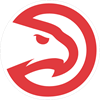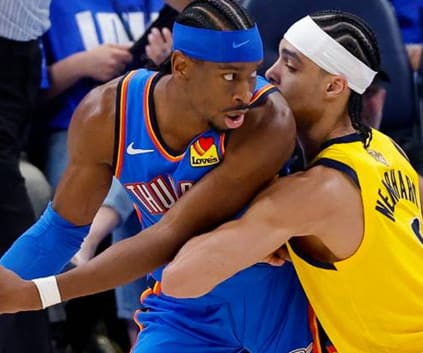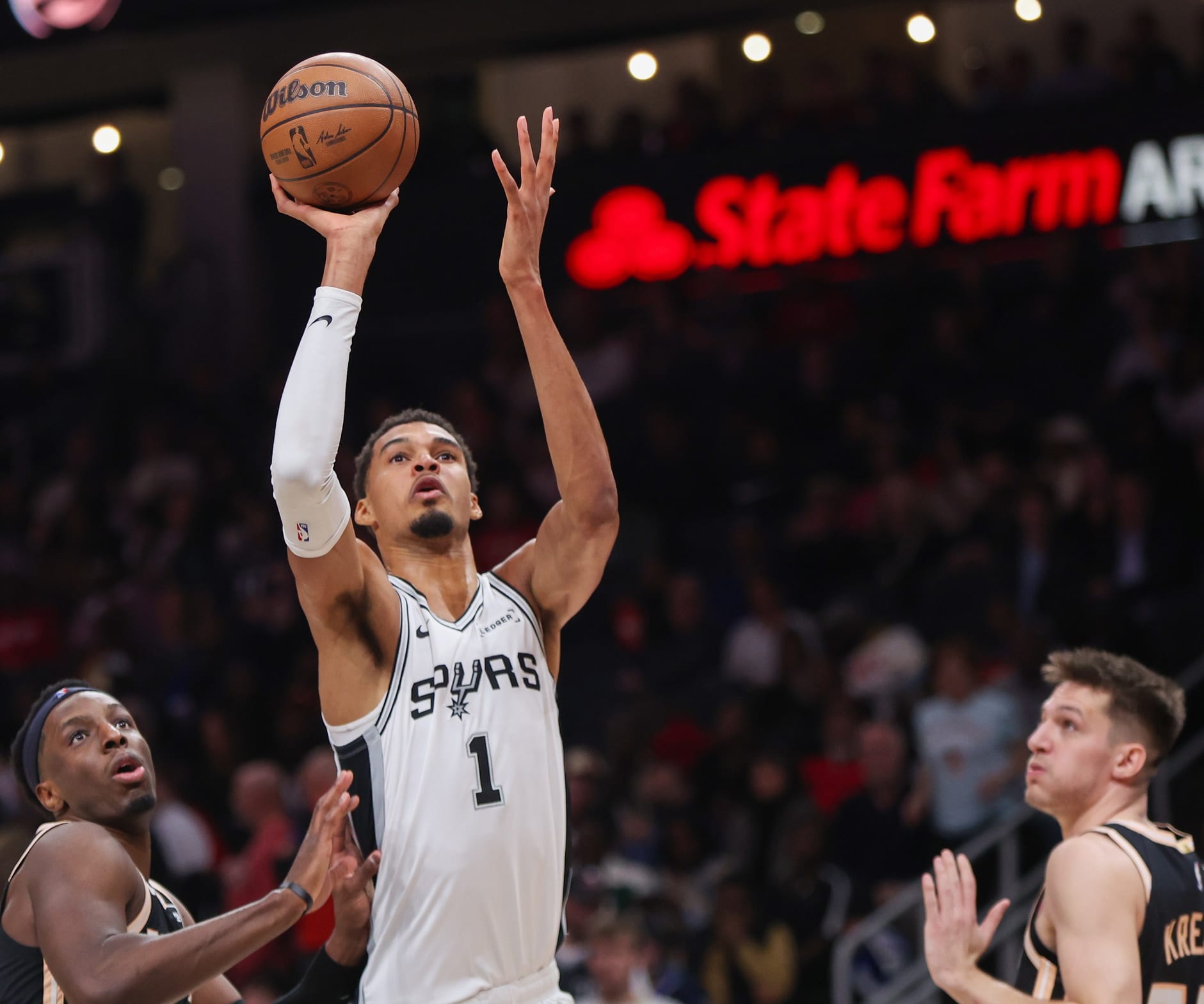2025 Stats
PTS
17.9
REB
5.5
AST
2.9
STL
0.5
BLK
1.4
ROS Projections
2025 Fantasy Outlook
Porzingis won a championship during his first season with the Celtics, but he appeared in only 99 regular-season games over two campaigns, including a career-low 42 last year. He tried to play through an illness during the playoffs, but he scored in single digits during nine of Boston's 11 postseason games, including the final seven. Celtics superstar Jayson Tatum tore his Achilles during the second-round series against the Knicks, and with him likely sidelined for all of 2025-26, Boston traded Porzingis to Atlanta and Jrue Holiday to Portland this offseason to alleviate cap stress. Porzingis hasn't played in more than 66 regular-season games since his rookie year, including three lost campaigns with fewer than 50. However, when he's been on the court, the Latvian big man has been productive. He's averaged at least 1.3 fantasy points per minute in four straight seasons and finished inside the top-85 players in eight-category leagues in seven of his nine NBA campaigns. Now on his fifth team, Porzingis has experience playing with other superstars and should seamlessly fit as a floor spacer in an offense led by high-usage players Trae Young and Jalen Johnson. Porzingis has operated as a reserve during only one game in his career (2016-17 with the Knicks), but if he slides into the Hawks' starting lineup, it's unclear who'd shift to the bench. The options would be up-and-coming center Onyeka Okongwu, who Clint Capela had blocked for years but finally outplayed the veteran last season, or 2024 No. 1 overall pick Zaccharie Risacher. If Porzingis comes off the bench, he'd still play 25-plus minutes a game and may even see a boost in usage if she shares the court with other reserves. The oft-injured sharpshooter will always be a risky fantasy selection, but even with missed time in the past, he's delivered strong production more often than not. Porzingis' upside is a tad higher in category leagues because of his unicorn combination of made threes and blocks. Read Past Outlooks

Cleared to face Raptors
Porzingis (illness) isn't on the injury report for Monday's game against the Raptors, Brad Rowland of the Locked On Podcast Network reports.
ANALYSIS
Porzingis missed Atlanta's previous game -- the second leg of a back-to-back -- but he'll be good to go Monday. He's appeared in two games since returning from a 10-game absence due to illness, and he's come off the bench and played 17 minutes in both outings. While he'll still presumably be under heavy limitations Monday, he may see an extra minute or two.
Porzingis missed Atlanta's previous game -- the second leg of a back-to-back -- but he'll be good to go Monday. He's appeared in two games since returning from a 10-game absence due to illness, and he's come off the bench and played 17 minutes in both outings. While he'll still presumably be under heavy limitations Monday, he may see an extra minute or two.
NBA Per Game Stats
Per Game
Total
Per 36
NBA Per Game Stats
Loading Per Game Stats...
2025 NBA Game Log
2025
2024
2023
2022
2021
2020
2019
2017
2016
2025 NBA Per Game Split Stats
Schedule
By Month
Starting/Off Bench
Days Rest
Vs Opp
By Result
2025 NBA Per Game Split Stats
Loading Split Stats...
Advanced Stats
Loading Advanced Stats...
Stat Review
2025
2024
2023
2022
2021
2020
2019
2017
2016
How does Kristaps Porzingis compare to other players?
This section compares his stats with all players from the previous three seasons (minimum 200 minutes played)*. The bar represents the player's percentile rank. For example, if the bar is halfway across, then the player falls into the 50th percentile for that stat and it would be considered average.
True Shooting %
61.1%
Effective Field Goal %
55.1%
3-Point Attempt Rate
39.0%
Free Throw Rate
40.1%
Offensive Rebound %
6.2%
Defensive Rebound %
18.4%
Total Rebound %
12.3%
Assist %
17.5%
Steal %
0.9%
Block %
5.1%
Turnover %
5.3%
Usage %
26.5%
Fantasy Points Per Game
33.7
Fantasy Points Per Minute
1.4
NBA Historical Fantasy Stats
Historical ADP
Loading Historical ADP...
Hawks Depth Chart
Our full team depth charts are reserved for RotoWire subscribers.
Subscribe Now
Hawks Rotation: Minutes Breakdown
Loading Hawks Rotation Data...
Average Fantasy Points
Minutes
FanDuel
DraftKings
Yahoo
FantasyDraft
Head2Head
Sorare
Average Fantasy Points are determined when Kristaps Porzingis was active vs. non-active during the season. Click here to view average fantasy points for a different time period.
Loading Average Minutes...
Past Fantasy Outlooks
2024
2023
2022
2021
2020
2019
2018
2017
2016
2015
Are the highs worth the lows? That's the question regarding Porzingis and his value. When he's healthy, the numbers are fantastic. Almost two blocks per game. Over 20 points per contest while shooting roughly 50 percent from the field. Almost two three-pointers per game. An enticing 85 percent from the charity stripe. Porzingis proved during last year's championship season that he is still The Unicorn. But he also made only 57 appearances and missed a dozen playoff games. The foot injuries he suffered during the NBA Finals forced surgery in late June. Porzingis is not expected back until early December, at best. A game count in the low 40's seems realistic for 2024-25. With sights set on back-to-back championships, Boston will be as gentle as possible with the Latvian and not force him to play too early. The Celtics bring back 38-year-old big man Al Horford to start while Porzingis is out. That means reserves Luke Kornet, Xavier Tillman and even Neemias Queta should receive big minutes early in the season. In the meantime, Porzingis can heal and focus on improving on the career-best 51.6 percent the center shot from the field last season. With Jayson Tatum, Jaylen Brown, Jrue Holiday and Derrick White on the roster, the Unicorn can take his sweet time healing and ease into things as the third or fourth scoring option when healthy. But will he stay healthy after his return? That's the big question.
More Fantasy News

Won't play vs. Toronto
Porzingis (illness) has been ruled out for Saturday's game against the Raptors, Brad Rowland of the Locked On Podcast Network reports.
ANALYSIS
Subscribe now to instantly reveal our take on this news.
Subscribe now to instantly reveal our take on this news.

Shooting woes in win
Porzingis racked up four points (1-8 FG, 0-3 3Pt, 2-2 FT), eight rebounds, two assists and two steals across 17 minutes during Friday's 111-99 win over New York.
ANALYSIS
Subscribe now to instantly reveal our take on this news.
Subscribe now to instantly reveal our take on this news.

Scores 16 points in limited minutes
Porzingis (illness) chipped in 16 points (6-12 FG, 2-4 3Pt, 2-4 FT), two rebounds and one assist across 17 minutes during Wednesday's 126-102 victory over the Timberwolves.
ANALYSIS
Subscribe now to instantly reveal our take on this news.
Subscribe now to instantly reveal our take on this news.

Cleared from injury report
Porzingis (illness) is off the injury report for Wednesday's game against Minnesota.
ANALYSIS
Subscribe now to instantly reveal our take on this news.
Subscribe now to instantly reveal our take on this news.

Out Monday, but now day-to-day
Porzingis (illness) has been ruled out for Monday's game against Oklahoma City but will be considered day-to-day afterward, Ohm Youngmisuk of ESPN.com reports.
ANALYSIS
Subscribe now to instantly reveal our take on this news.
Subscribe now to instantly reveal our take on this news.
Latest Fantasy Rumors

Could be used in trade package
Porzingis could be used in a potential trade package to acquire Anthony Davis from the Mavericks, Marc Stein of The Stein Line speculates.
ANALYSIS
If the Mavericks were to acquire Davis, they'd need to add salary-matching players, and Porzingis would be an option they'd have to consider to get a deal done. Porzingis hasn't played since Dec. 5 due to an illness, and while the Hawks acquired the big man earlier this summer, they'd be open to letting him leave due to his injury history and the fact that he'll be a free agent after this season.
If the Mavericks were to acquire Davis, they'd need to add salary-matching players, and Porzingis would be an option they'd have to consider to get a deal done. Porzingis hasn't played since Dec. 5 due to an illness, and while the Hawks acquired the big man earlier this summer, they'd be open to letting him leave due to his injury history and the fact that he'll be a free agent after this season.
















